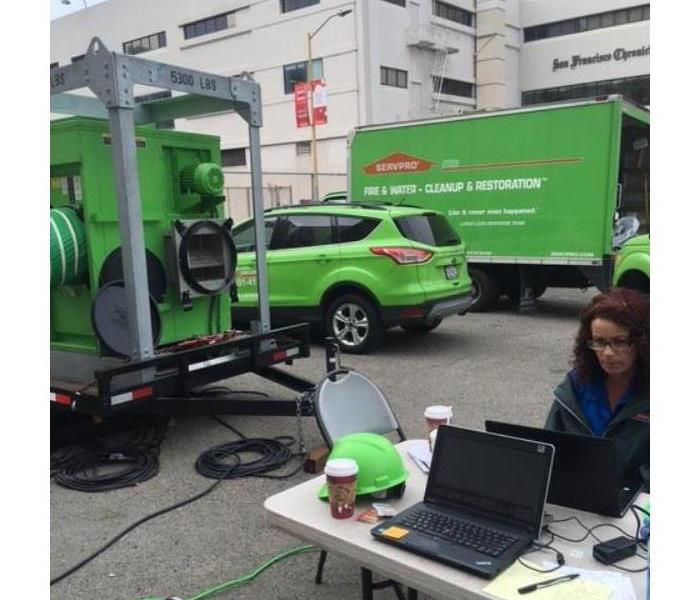What is a desiccant dehumidifier?
5/21/2017 (Permalink)
Desiccant-Based Dehumidification is an interesting topic. Most people are aware of “cold-coil” dehumidification, which removes moisture from the air by condensing the moisture on a cold surface.
Desiccant dehumidification relies on adsorption or absorption power of desiccants which are substances that attract water-vapor molecules from the air. They rely on adsorptive or absorptive process.
Adsorption refers to a desiccant that does not change phase as it collects airborne moisture. Most adsorbents are solids; familiar examples include activated alumina, silica gel, and zeolites (molecular sieves). In water damage drying application, desiccant machines are made to collecting moisture on a rotating wheel coated with solid desiccant material. As damp air passes through one section of the wheel the desiccant on that section adsorbs water vapor, making the air drier than when it entered. Wheel rotation then exposes the moisture-laden desiccant to a “regenerating” air stream that strips the captured moisture away from the desiccant (desorption). The wheel rotates to the damp air collection port and it is ready to adsorb more moisture.
At SERVPRO we have both cold “coil dehumidifiers” and “desiccant dehumidifiers”. Having one or more desiccants are the benchmark of a professional mitigation company.
We have what it takes to get a commercial property back up and running.






 24/7 Emergency Service
24/7 Emergency Service